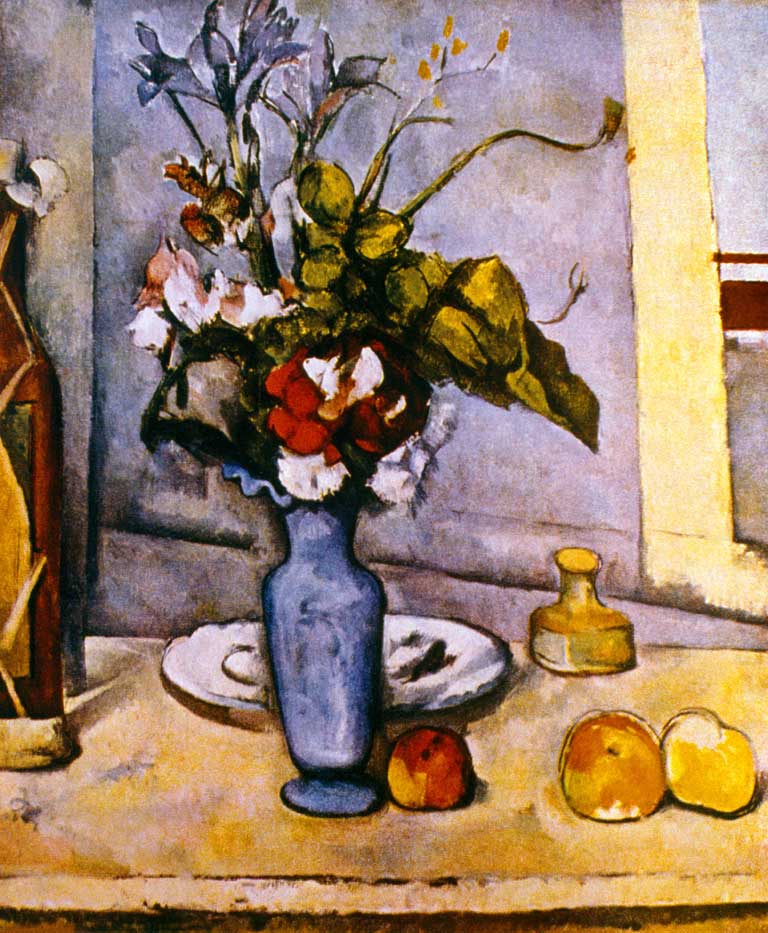Cézanne: A Life, By Alex Danchev
Thanks to this original biography, we see a great artist from a new angle, and in extra depth

In 1906 Picasso struggled with a portrait of Gertrude Stein. They got on well. She gave him some 80 sittings. There should have been no problem. Picasso, however, began to complain that he could not "see" Stein. And when the summer break arrived the portrait remained unfinished.
Art historians, discussing this major work, now in the Metropolitan Museum of Art in New York, describe how Picasso returned from his holiday in Spain, wiped out the entire face and without seeing Stein, repainted the portrait, drawing not on perceptual likeness but what he knew about the sitter. The formative influence of his recent study of Iberian sculpture is frequently mentioned. Few grasp that the main obstacle must have been Cézanne. In Stein's collection hung one of Cézanne's finest portraits of his wife – "Madame Cézanne with a Fan". She is viewed sideways, her head slightly turned towards us. Her eyes are oddly misaligned and we see more of the far side of the mouth than we would normally do.
Exactly the same quirks appear in Picasso's Stein. There they have an expressive role. In the Cézanne, like every brush-mark or facet of colour, they add paradoxically to the steadiness of the whole. We do not learn anything about the sitter's character. Nor does the portrait ostensibly seek to catch her likeness at a specific moment. But there she is incontrovertibly, her presence exerting a more far-reaching duration owing to the famous probity of Cézanne.
Cézanne has been called "the great exemplar", the man who did much to kick-start the history of modern art. He is also a great puzzle, an awkward, stumbling character, glimpsed in his few letters and through anecdotes as a curious mix of the earthy and scatological as well as the tender, noble and proud. He fired off angrily at others – "Institutions, pensions and honours are made only for cretins, humbugs and rascals" – and adopted an outsider position, which yet permitted a vein of conservatism and his habit of going to Mass. Solitary and depressed at the end of his life, he wrote angrily to his son: "All my compatriots are arseholes beside me."
Alex Danchev introduces a fresh tone into the debates about this artist. In this new biography, he sets out to persuade us that Cézanne embarked as a young man on a project of self-definition and self-differentiation. His companion was his schoolfriend, Émile Zola, the axis of Cézanne's emotional life from cradle to grave in Danchev's account.
As others have done, Danchev explores their relationship partly through Zola's novels, but no previous writer has paid such attention to Cézanne's reading or investigated so thoroughly his intellectual interests. Further contextual matter is supplied through Danchev's recourse to relevant fiction and other cultural figures. We begin to discern this artist's life, through comparison and affinity, amid a stimulating tapestry of ideas.
But the basic facts remain starkly relevant. Cézanne, born in 1839, never sold a painting to anyone but friends until he was 31. After the third Impressionist exhibition in 1877, Cézanne again lost confidence and did not exhibit in Paris for ten years. Even to get him to Paris had been difficult and his initial visit lasted only five months. It needed another year in Aix-en-Provence, in the confines of his family, before he returned, this time for almost two years. Zola almost despaired, announcing: "Convincing Cézanne of something is like persuading the towers of Notre Dame to execute a quadrille."
His first one-man show did not take place till 1895, when he was 56. It was mounted by Vollard. Legend has that the artist slipped into the gallery incognito one day and marvelled at the fact that all the paintings had been framed. The famous doubt that had informed his vision took on a more negative form in the years leading up to his death in 1906, when, more or less a recluse, he became gripped by depression.
Danchev is a political historian who caught attention in 2005 with his biography of Georges Braque. It was streets ahead of most artist biographies and seemed a respectable follow-up to Richardson's Picasso and Spurling's Matisse. But Danchev's Cézanne is in a different category. More ambitious, more brilliant and more discursive, it has a lively, consistently interrogative authorial voice; it draws upon a rich hinterland of cultural knowledge; it makes interventions into the massive historiography on Cézanne, challenging some scholars, affirming others. It repeatedly dazzles, but in some places it also irritates, owing to its excess and its somewhat baggy structure. Occasionally the agile but often too subjective descriptions of paintings trouble, and obscure more than they reveal.
Yet the reach of this book is unlikely ever be surpassed in the search for Cézanne. Danchev is not only a formidable historian; he is also closely attentive to the dynamics in any relationship. He needles away at the complex scenarios in Cézanne's family, including his decision to keep his wife and child hidden from his father. He brings out the greatness of Camille Pissarro and his importance to Cézanne. On many aesthetic issues – Cézanne's use of white, his search for the "sensation", his debt to Delacroix, Courbet and Manet – we are dealt new observations. And behind Cézanne we are made aware of the Parisian art world, teeming with interesting figures. This book, which makes a major contribution to our understanding of this haunting figure, is enhanced by three fat wads of colour reproductions and made more seductive by the photographs of artists that infiltrate the text.
Frances Spalding's 'John Piper, Myfanwy Piper: lives in art' is published by OUP
Join our commenting forum
Join thought-provoking conversations, follow other Independent readers and see their replies
Comments
Bookmark popover
Removed from bookmarks